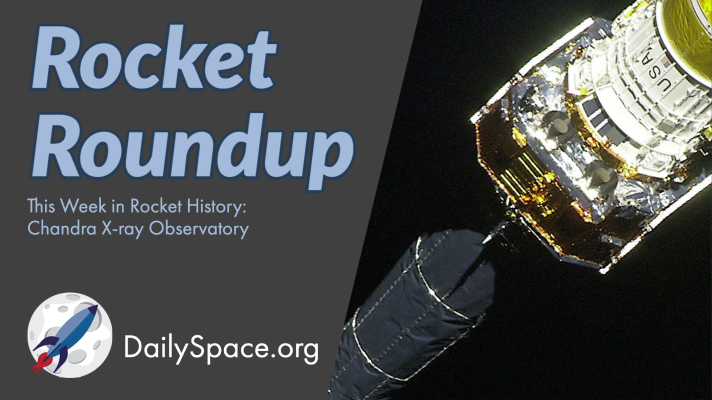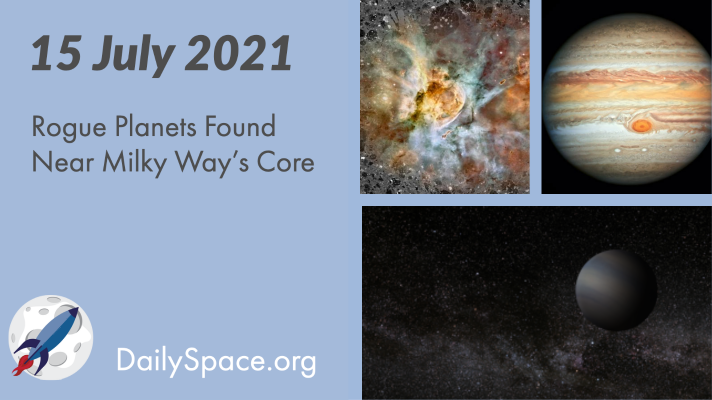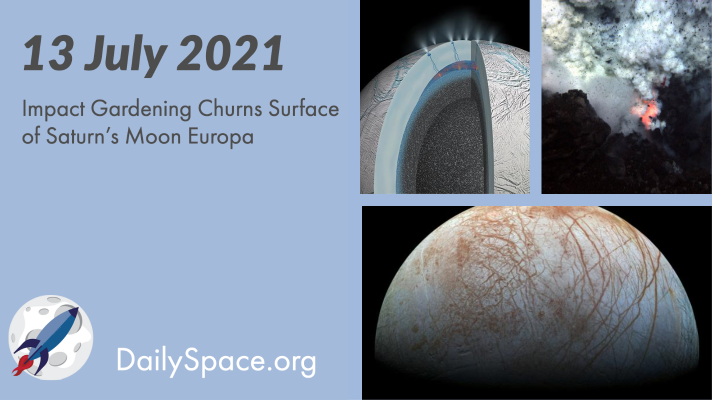
Jul 29, 2021 | Artemis, Blue Origin, Daily Space, Jupiter, Random Space Fact, Space History, Space Policy, Spacecraft, SpaceX
For this week’s Rocket Roundup, we have exactly zero launches to cover. What’s up with that? In the meantime, we talk about Europa Clipper’s launch announcement, Blue Origin’s attempt to be a part of Artemis, what a NOTAM is, and how we use it. Plus, this week in rocket history, we look back at the launch of the Chandra X-ray Observatory.

Jul 28, 2021 | Daily Space, Earth, Exoplanets, Galaxies, Jupiter, Planetary Nebulae, Spacecraft, Supernovae
Scientists analyzed archival data from the Hubble Space Telescope and found evidence of water vapor in the atmosphere of Jupiter’s moon Ganymede. The water vapor is present due to thermal escape from the icy surface of the moon. Plus, a “fizzled” gamma-ray burst and all the exoplanets!

Jul 23, 2021 | Conferences, Daily Space, Exoplanets, Galaxies, Globular Cluster, Jupiter, JWST, Perseverance, Sky Watching, Spacecraft, Spitzer, Stars, White Dwarfs
After several weeks of trying different methods, the operations team successfully revived the stalwart Hubble Space Telescope, which experienced a payload computer fault back on June 13. The first images taken were of several unusual galaxies. Plus, Jupiter’s moon Io triggers radio emissions from the giant planet, and this week, What’s Up returns with a look at the Summer Triangle.

Jul 16, 2021 | Asteroids, Black Holes (Stellar), Conferences, Daily Space, Earth, Exoplanets, Globular Cluster, Jupiter, Kepler, Mercury, Our Solar System, Stars, Supernovae
Using data collected by NASA’s Kepler Space Telescope, scientists have found four free-floating, or rogue, planets near the core of the Milky Way. These planets formed in discs in other planetary systems and were thrown out by gravitational interactions with larger planets. Plus, the early solar system, including ancient Earth, Jupiter’s chemistry, and Mercury’s core.

Jul 14, 2021 | Blue Origin, Crewed Space, Daily Space, Earth, Jupiter, Our Solar System, Saturn, Space China, Spacecraft, Virgin Orbit
Over tens of millions of years, the surface of Europa has been churned by impacts down to an average depth of 30 centimeters. This churning means that the search for chemical biosignatures must look below that zone. Plus, methane and icequakes at Enceladus, predicting underwater eruptions, Virgin Galactic’s flight, and a Chinese spacewalk.

Jun 23, 2021 | Agencies, Comets, Daily Space, Earth, Jupiter, Milky Way, Our Solar System, Physics, Venus
Minor planet 2014 UN271, discovered in data collected by the Dark Energy Survey, is set to make a close pass to Saturn’s orbit at the end of the decade, giving astronomers a chance to observe a rare trans-Neptunian object from up close…ish. Plus, Venus, Jupiter, the Milky Way, and an invisible galactic structure discovered quite by accident.








 We record most shows live, on Twitch. Follow us today to get alerts when we go live.
We record most shows live, on Twitch. Follow us today to get alerts when we go live.